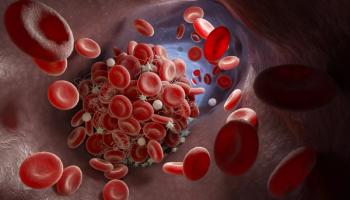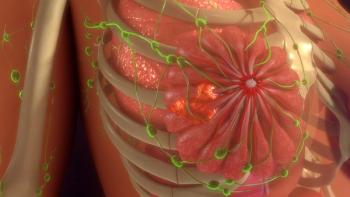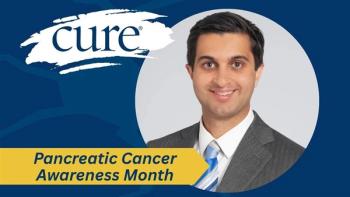Patients with recurrent low-grade intermediate-risk non-muscle-invasive bladder cancer had better responses to treatment after receiving primary chemoablation with UGN-102, a nonsurgical treatment alternative.
Standard of care for this patient population is transurethral resection of bladder tumor (TURBT), the researchers noted in the study. However, patients with low-grade intermediate-risk non-muscle-invasive bladder cancer commonly experience disease recurrence, and multiple TURBTs may be risky. Specifically, TURBTs require patients to go under general anesthesia, “which is associated with morbidity and risks to the patient,” said Dr. Sandip M. Prasad, in a video presentation of the study.
Prasad is a urologic oncologic surgeon at Atlantic Medical Group in New Jersey.
“Although TURBT is widely accepted by urologists, patients report significant and persistent discomfort following TURBT,” the researchers wrote. “When asked to choose between a nonsurgical therapy for the treatment of NMIBC or TURBT, one small study [published in The Journal of Urology] reported that patients without experience of a specific nonsurgical intervention, but who have experienced TURBT, choose the nonsurgical intervention approximately 40% of the time.”
Glossary:
Primary chemoablation: utilizing chemotherapeutic drugs to treat tumors directly.
Complete response (CR): tumors that have completely disappeared after cancer treatment.
Duration of response (DOR): the length of time patients respond to treatment.
Transurethral resection of bladder tumor (TURBT): a type of surgery that removes bladder tumors.
Recurrence: the return of the disease.
The Effectiveness of UGN-102 in Managing Non-Muscle-Invasive Bladder Cancer
The goal of the phase 3 ENVISION study, published in The Journal of Urology, was to see if patients would fully respond to the nonsurgical UGN-102 treatment.
The study included 228 patients with low-grade intermediate-risk non-muscle-invasive bladder cancer who were treated with UGN-102. Of the 228 patients, 191 achieved complete responses (CRs) at three months. At 12 months, the probability of a treatment response was 82.3%, according to the study, meaning patients would likely remain disease-free one year after treatment.
READ MORE: FDA Accepts New Drug Application for UGN-102 in Bladder Cancer
At 15 months after the three-month CR, the median duration of response (DOR) was 80.9% in 43 patients, according to the study. The DOR was also 80.9% in nine patients at 18 months after the three-month CR. Of note, the median DOR could not be measured at a median follow-up of 13.9 months. This meant the average number of patients in the study did not experience disease worsening or spreading by the follow-up time of 13.9 months.
“This report provides additional support for primary chemoablation as a well-tolerated nonsurgical alternative to TURBT for recurrent low-grade intermediate-risk non-muscle-invasive bladder cancer, with a high CR rate at three months (79.6%) and a high DOR estimate at 12 months of follow-up (82.3%),” the researchers noted.
Side Effects Associated With UGN-102
The safety profile for UGN-102 was favorable in the patient population, according to the study. Side effects that emerged during treatment occurred in 57.1% of patients and 13.8% of patients experienced grade 3 (severe) or worse side effects.
Treatment-emergent side effects occurred in 119 patients up to three months after treatment and occurred in 75 patients after three months, researchers found. The most common treatment-emergent side effects that did not resolve in 33 patients included dysuria (discomfort during urination) and fatigue.
Discontinuation of UGN-102 because of treatment-emergent side effects occurred in seven patients, although six patients in the study had treatment-emergent side effects that led to study discontinuation.
MORE: UGN-102 Has Promising Outcomes With Or Without Bladder Cancer Surgery
The most common side effects in general included dysuria (22%), hematuria (blood in urine; 8.3%), urinary tract infection (7.1%), pollakiuria (frequent urination; 6.7%), fatigue (5.4%) and urinary retention (difficulty urinating; 5%).
In the study, the causes of death in patients were because of pneumonia, cardiac failure or unknown reasons. Researchers noted that these causes of death were assessed as unrelated to treatment.
“The UGN-102 AE profile also seems acceptable with most [side effects] being mild to moderate and the majority being resolved or resolving,” the researchers wrote.
Reference:
“Primary Chemoablation of Recurrent Low-Grade Intermediate-Risk Nonmuscle-Invasive Bladder Cancer With UGN-102: A Single-Arm, Open-Label, Phase 3 Trial (ENVISION)” by Dr. Sandip M. Prasad, et al., The Journal of Urology.
For more news on cancer updates, research, and education, don’t forget to subscribe to CURE®’s newsletters here.






